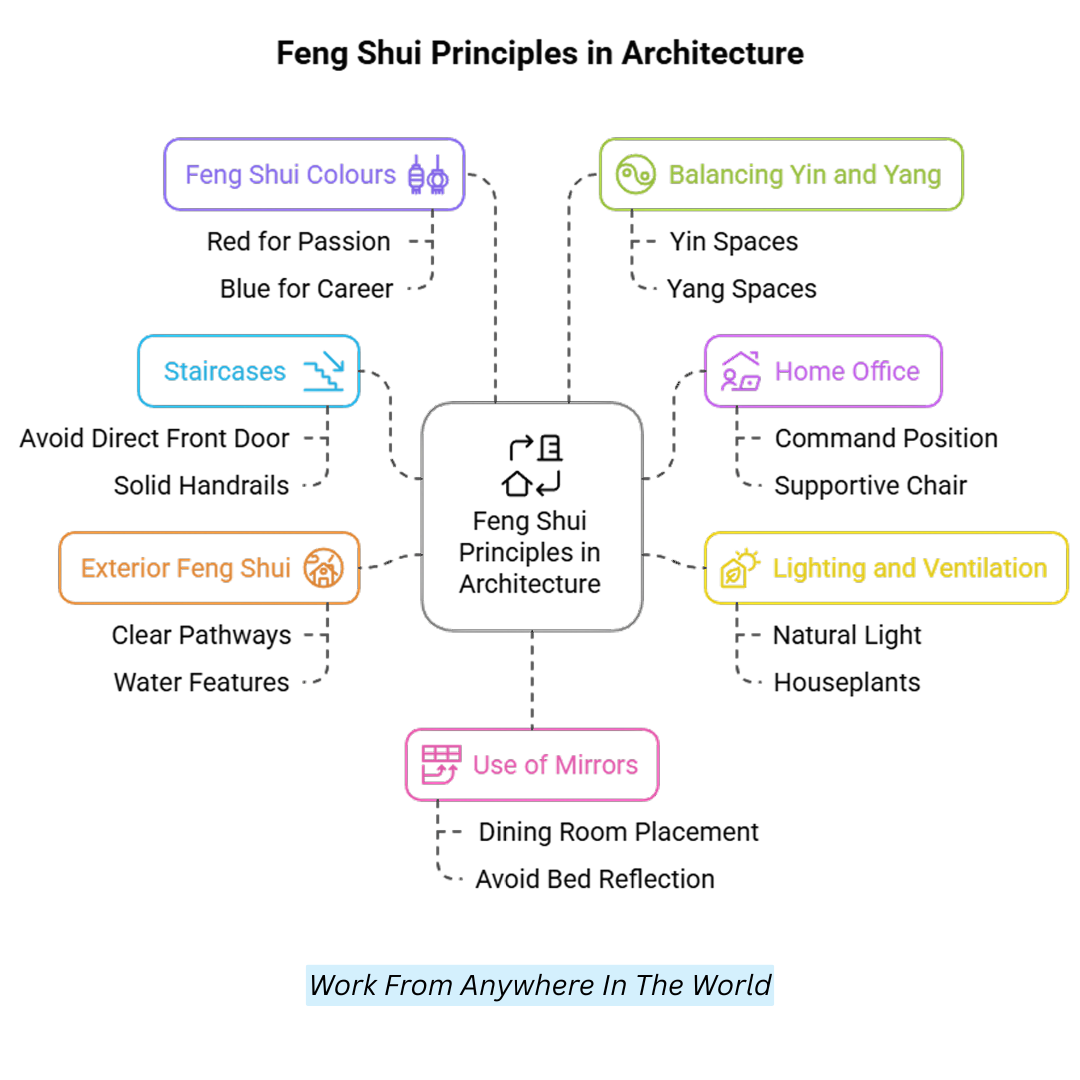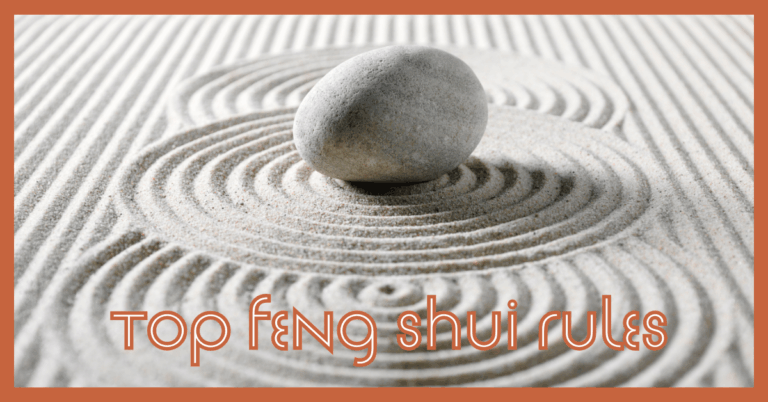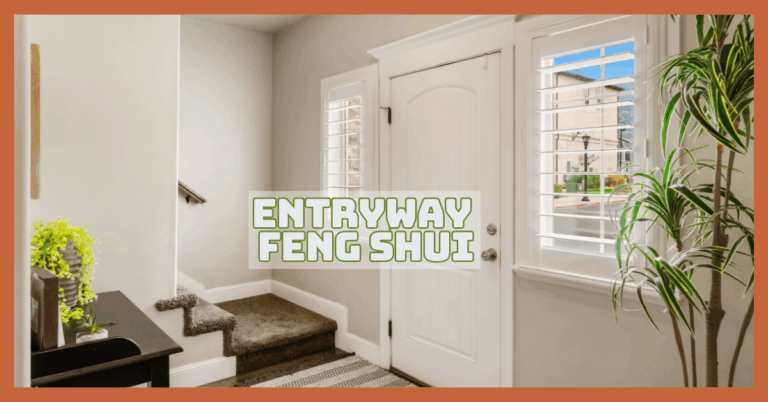Feng Shui For Architecture That Inspires Wellness
Feng Shui for architecture blends ancient Chinese principles with modern design to create harmonious spaces that enhance well-being, productivity, and success.
By aligning buildings with natural energy flow, Feng Shui improves physical, emotional, and spiritual health.
Whether for homes or offices, applying Feng Shui ensures spaces are intentionally designed to support the needs of their occupants, promoting balance and prosperity.
Feng Shui Tips For Architecture
Enhance your architectural design with Feng Shui—an ancient art that harmonizes spaces for balance, prosperity, and well-being by aligning structure, elements, and energy flow.
1. Site Selection And Orientation
Selecting the right site for a building is the cornerstone of effective Feng Shui design. Ideally, the plot of land should have supportive topography.
A gentle slope with higher ground behind symbolizes support and protection, while a transparent, open front represents welcoming opportunities.
Avoid properties near graveyards, busy roads, or electrical towers, as these are believed to bring negative chi. The direction the building faces also plays a critical role in energy alignment.
South-facing homes are preferred for their exposure to natural light and alignment with the Fire element, enhancing fame and recognition. Conduct a thorough energy evaluation before construction.
2. The Five Elements In Architecture
Feng Shui revolves around five core elements—Wood, Fire, Earth, Metal, and Water—each contributing unique energies that influence the feel of a space. Balancing these elements in architectural design ensures a harmonious environment.
Use natural wood for furnishings to invoke growth, incorporate metal fixtures for clarity, install water features for flow, use earthen materials for stability, and add light or fireplaces to bring in the energy of Fire.
Applying the Bagua map helps determine which elements support different life areas like health, wealth, or relationships. Harmoniously blending these materials, shapes, and colours ensures that each home area is energetically optimized.
3. Entryways And Main Doors
The main entrance is often called the “mouth of chi” in Feng Shui and is the most critical area for welcoming energy into a home or building.
A clean, visible, and well-lit entryway invites prosperity and good fortune. Avoid obstacles like trash bins, overgrown plants, or clutter around the door.
Doors should be solid, proportionate, and open fully without squeaking. Direction-based colour choices enhance energy. For example, a red door facing south promotes fame, while a black one facing north supports career success.
Double doors in larger homes symbolize abundance and welcoming opportunities. The entire energy field of the house is set in motion at the entrance.
4. Floor Plan Layout
A practical floor plan supports the smooth flow of chi, avoiding sharp angles and dead-end spaces where energy can become stagnant.
Rooms should be arranged to allow easy movement and maintain balance between yin (quiet) and yang (active) areas. Long corridors should be minimized, as they can rush chi too quickly, disrupting peace.
The center of the home should be open and clutter-free, as it represents the heart or health area. Ideally, the layout should form a square or rectangle, ensuring that no life aspect described in the Bagua map is missing. Consistency and flow are the keys to vibrant energy.
5. Bedroom Design
Applying feng shui principles for bedroom architecture enhances emotional balance and sleep quality by thoughtfully arranging key elements like the bed, mirrors, and room layout.
The bed should be placed in the command position—visible from the door but not directly in line with it—to instill a sense of security. Avoid mirrors reflecting the bed, as they can disturb sleep and reflect energy away.
Use calming, earthy colours like beige, peach, or light blue to foster relaxation. Symmetry also matters: matching nightstands and lamps promotes balance and harmony in relationships. Keep electronics to a minimum and ensure the room is well-ventilated and clutter-free to support restorative sleep.
6. Kitchen Design
In Feng Shui, the kitchen symbolizes nourishment and wealth. The stove represents financial energy, so its placement is crucial.
Avoid positioning the stove directly across from the sink or refrigerator, creating a conflict between fire and water elements.
Ensure that the kitchen is clean and well-organized, with no broken appliances. Use all burners on the stove regularly to stimulate financial opportunities. Mirrors behind the stove are believed to double abundance.
Incorporate warm colours and natural materials to boost energy. A well-lit, ventilated kitchen with fresh ingredients and thoughtful design can enhance health, prosperity, and family harmony.
7. Bathroom Considerations
In feng shui for architecture, careful bathroom placement and design are essential to prevent energy loss and maintain harmony throughout the home.
Avoid positioning bathrooms in the center of the house or directly facing the kitchen or front door. Always keep the toilet lid closed and the door shut to prevent chill from escaping.
Decorate with uplifting colours and live plants to counteract draining effects. Use crystals or mirrors strategically to redirect energy.

8. Staircases
Staircases are conduits for energy flow between building levels and must be carefully designed to support harmony. Avoid staircases that lead directly to the front door, as they can cause chi to rush out of the home.
Instead, place a rug or screen to slow the flow of energy. Solid handrails and even steps ensure safety and stability. Spiral staircases are discouraged due to their disorienting energy patterns.
Use soft lighting and carpet to enhance the movement of chi and reduce harshness. Staircases should feel balanced and secure, helping energy to circulate smoothly throughout the entire space.
9. Home Office And Study Areas
Feng Shui can significantly enhance productivity and mental clarity in workspaces. The desk should be in the command position, allowing a clear view of the door without being directly in line with it.
This placement fosters control and focus. Avoid facing a wall; place a motivational image or mirror in front if unavoidable.
Use a supportive chair, adequate lighting, and remove clutter regularly. Decorate with symbols of success such as awards, diplomas, or inspiring artwork. Include plants or water elements to invite vitality and abundance.
A well-balanced office supports professional growth, creativity, and efficient decision-making, contributing to success and wellness.
10. Lighting And Ventilation
Bright, well-ventilated spaces are essential in Feng Shui as they allow chi to flow freely. Open design, skylights, and huge windows are preferred since natural light is the best source of positive energy.
Avoid dark corners and use layered lighting—ambient, task, and accent lights—to create a warm and dynamic environment.
Air quality is equally important. Incorporate houseplants to purify the air and avoid artificial air fresheners. Essential oils like lavender or citrus can uplift the mood and cleanse the energy.
Open windows regularly to refresh the atmosphere. A bright, airy home supports health and fosters inspiration and happiness.
Create a Profitable Holistic Business That Transforms Lives
🌿 Discover inspiring holistic business ideas that blend nature, wellness, and purpose.
Learn how passionate nature lovers are building income streams while helping others live more balanced, mindful lives.
Read Profitable Holistic Business Ideas That Transform Lives
11. Exterior Feng Shui
The energy surrounding your home influences the energy within it. In Feng Shui, the exterior environment extends the home’s energy field.
Keep landscaping tidy and ensure pathways to the entrance are clear and gently curved to encourage smooth chi flow. Avoid clutter or broken items outside.
Water features like fountains or ponds should be placed thoughtfully—never behind the house, as this represents a loss of support.
The front door should be evident and well-lit to attract beneficial energy. Exterior colours and materials should harmonize with the surroundings. A balanced and inviting exterior creates a strong foundation for harmony.
12. Feng Shui Colours And Their Use
In feng shui for architecture, using colour intentionally helps balance the five elements and align a space with specific life goals.
Each colour supports a different life aspect:
- Red (Fire) brings fame and passion
- Blue and black (Water) enhance career opportunities
- Green (Wood) promotes growth
- Yellow and beige (Earth) stabilize
- White and gray (Metal) offer clarity
Choose colours that align with your intentions and the Bagua area they relate to. Avoid overusing any single colour, especially overly bright tones, in rest areas.
Harmonize bold shades with neutrals for balance. Use paint, fabrics, art, and lighting to incorporate colour strategically, uplifting the mood and energy of your spaces.
13. Balancing Yin And Yang In Design
Feng Shui emphasizes the balance of yin (passive, soft) and yang (active, bright) energies within a space. Balancing yin and yang is a core principle in feng shui for architecture.
Guiding designers to create spaces harmonizing soft, restful elements with active, vibrant features for overall well-being.
Yin spaces include bedrooms, meditation rooms, and relaxation zones—best suited with muted lighting, curved lines, and soft textures.
Yang areas like living rooms, kitchens, and offices thrive on open layouts, vibrant colours, and intense lighting. Overusing either energy leads to an imbalance.
Too much yin can cause stagnation and lethargy, while excessive yang may result in restlessness and stress. Architects can use contrast in materials, lighting, and spatial planning to strike the right energy balance, enhancing comfort, productivity, and overall well-being.
14. Use Of Mirrors To Enhance Energy Flow
Mirrors are powerful tools in Feng Shui architecture when used thoughtfully. They reflect energy, expand space visually, and can double the positive energy of elements like natural light or beautiful views.
Place mirrors in dining rooms to symbolically double abundance, or across from windows to bring in more light and outdoor energy.
However, avoid placing mirrors directly facing the main door (which can repel chi) or reflecting beds and toilets, as these create energetic disturbances.
The shape and frame also matter—rounded or oval mirrors are preferred for gentler energy flow. Use mirrors strategically to redirect chi, brighten dark corners, and open up cramped architectural space.

Common Feng Shui Mistakes To Avoid In Architecture
Here are common Feng Shui mistakes to avoid in architecture, especially during the design and layout planning stages:
1. Ignoring The Main Entrance Orientation
Mistake
Placing the main door without consulting favourable compass directions or considering external features like roads or corners can invite negative energy.
This mistake disconnects the home from supportive Qi and weakens the overall flow and balance throughout the structure.
Why It's A Problem
The front door is the primary entry point for energy. Poor orientation leads to weakened life force entering the home, affecting opportunities, wealth, and health. It can create a feeling of resistance, where everything feels harder than it should.
2. Designing A Long, Straight Entryway
Mistake
In feng shui for architecture, layouts that allow energy to rush straight from the front door to the back disrupt the home's ability to retain positive Qi. This design flaw prevents beneficial energy from settling or nourishing the space properly.
Why It's A Problem
When Qi flows too fast, it creates instability and restlessness for the occupants. It can lead to financial leaks, poor concentration, and a lack of grounding. People living in such homes may experience difficulty holding onto resources or feeling secure.
3. Placing Bathrooms In The Centre
Mistake
Placing a bathroom in the exact centre of the home may seem convenient for plumbing, but it's considered inauspicious in Feng Shui. The centre is the heart of the house and should be reserved for grounding, not waste or water elements.
Why It's A Problem
Bathrooms represent drainage and elimination. They symbolically flush away good fortune and health when placed in the center.
It can lead to energy depletion, chronic stress, and recurring health issues that affect everyone in the household over time.
4. Staircase Facing The Front Door
Mistake
Building a staircase directly aligned with the front door causes energy to rush up or down the stairs immediately upon entry. This layout disrupts the natural energy flow and doesn't allow Qi to circulate and nourish the rest of the home.
Why It's A Problem
This configuration causes an imbalance where energy bypasses important areas of the house. It may result in financial instability, health imbalances, and challenges in achieving long-term stability. Residents often feel as though they're constantly losing momentum or control.
5. Poor Bedroom Placement
Mistake
In feng shui for architecture, placing bedrooms above garages, kitchens, or bathrooms is discouraged as it compromises the peaceful and supportive energy needed for restful sleep.
These placements may be structurally efficient, but they disregard the importance of nurturing, calm energy for restorative rest and health.
Why It's A Problem
Sleeping in energetically unstable zones can disrupt sleep quality and mental well-being. Over time, this contributes to fatigue, anxiety, and emotional burnout.
Children or sensitive individuals in such rooms may have more intense reactions, including nightmares or chronic tension.

6. Improper Kitchen Layout
Mistake
Placing the stove directly opposite the sink or refrigerator causes a clash between fire and water elements. This conflicting setup disrupts the harmony in one of the most important energy centers of the home — the kitchen, symbolizing wealth and nourishment.
Why It’s A Problem
The fire-water clash creates internal tension and imbalance. It may lead to frequent arguments, health issues (especially digestive), and financial instability.
Since the kitchen represents abundance, constant elemental conflict weakens prosperity and can erode peace among family members over time.
7. Sharp Corners And Angled Walls
Mistake
Using excessively sharp-edged walls, beams, or triangular architecture sends out what Feng Shui calls “Sha Qi,” or killing energy.
In feng shui for architecture, avoiding sharp-edged designs is crucial, as these features emit Sha Qi, disrupting harmony and affecting the well-being of those within the space.
Why It’s A Problem
Constant exposure to Sha Qi can result in unease, arguments, or illness. People may feel edgy, fatigued, or unfocused. Over time, it undermines harmony and health, especially if these angles point at beds, desks, or main living areas.
8. Blocked Or Cluttered Pathways
Mistake
Allowing furniture, shoes, or other clutter to block main passageways or entrance areas restricts Qi flow. Tight or obstructed layouts trap energy, preventing it from circulating freely and nourishing all areas of the home with vitality and movement.
Why It’s A Problem
Blocked energy paths create stagnation, leading to mental fog, lack of motivation, and career or relationship obstacles. Stagnant Qi fosters stuck emotions, poor decision-making, and frustration, making life feel like it’s not progressing smoothly or successfully.
9. Overusing Glass And Mirrors
Mistake
Placing large mirrors directly opposite doors, windows, or beds reflects energy away or causes chaotic motion. Glass-heavy designs, especially in bedrooms or entryways, can destabilize the energy and lead to overexposure or imbalance in private spaces.
Why It’s A Problem
Mirrors bounce Qi, which can scatter focus, disrupt sleep, or symbolically “cut” personal energy. When facing beds or doors, they may reflect problems, invite third-party interference in relationships, or contribute to insomnia and emotional instability over time.
10. Neglecting The Landform And External Environment
Mistake
In feng shui for architecture, evaluating surrounding landforms is essential, as external features like mountains or rivers significantly shape the quality and direction of Qi entering a building. These environmental features dictate the foundational flow of Qi before it even reaches the building's interior.
Why It’s A Problem
Negative external forms, like sharp corners, fast-moving roads, or stagnant water near a property, can create harmful external Qi. These imbalances may manifest as bad luck, poor reputation, or chronic struggles in relationships, finance, and career.

Conclusion
Incorporating Feng Shui into architecture creates spaces that promote balance, harmony, and well-being. In feng shui for architecture, incorporating principles such as balancing the five elements and aligning structures with natural forces helps create spaces that promote harmony, productivity, and well-being.
The concepts of Feng Shui offer a timeless framework for designing environments that support both the residents and the environment, whether applied to individual structures or vast cities.
I trust you enjoyed this article on the Feng Shui for Architecture That Inspires Wellness. Please stay tuned for more inspiring guides, helpful tips, and ideas to help you live closer to nature every day.
Take care!
— JeannetteZ🌿
💬 Your Opinion Is Important To Me
Do you have thoughts, ideas, or questions? I’d love to hear from you. Please leave your comments below or email me directly at Jeannette@Close-To-Nature.org.
📚 More Nature-Inspired Reads
Explore more ways to connect with nature, nurture your pets, and live in harmony with the world around you 🌿







